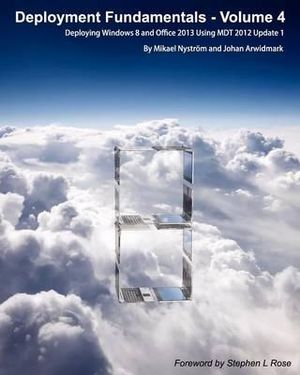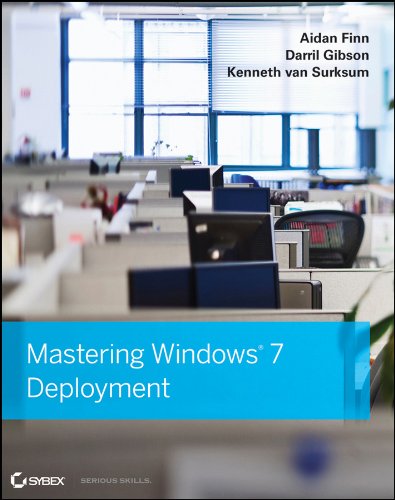Quite bit of stuff to read since my last aggregation post on the 3rd.
Windows Server
- Enable and Use Remote Commands in Windows PowerShell: For when you get the error “Unable to connect to the server using Windows PowerShell Remoting”.
Hyper-V
- KB3031598: Hyper-V host crashes and has errors when you perform a VM live migration in Windows 8.1 and Windows Server 2012 R2. Wait before deploying, as with all hotfixes, unless this issue is breaking stuff for you (test and decide).
- Update Emulex VMQ Issue – They finally did it: It’s only taken 1.5 years for Emulex/HP to sort this disaster out. Choose better hardware 🙂
- Best practices for migrating a datacenter from VMware to Microsoft Hyper-V: From the System Center Virtual Machine manager team.
- Checking and Correcting Virtual Hard Disk Fragmentation: By Ben Armstrong
- How Hyper-V Backup Got Better in 2012 R2 (but now requires a SCSI controller): By Ben Armstrong
- Hyper-V and "Event ID: 58 – The disk signature of disk 2 is equal to the disk signature of disk 0": By Ben Armstrong
Windows Client
- Sluggish Tablet Market Will See Some Windows 10 Gains This Year: By 2019, IDC expects Android to lead with 62.9 percent of the tablet market. iOS will show weaker growth (23.0 percent), while Windows will gain "significant share" (14.1 percent) yet still remain in third place, according to IDC.
- Microsoft to accelerate its release pace for Windows 10 preview: Microsoft appears to be on the verge of releasing an updated Windows 10 preview build. And this time, the company says, it’s serious about picking up the pace.
- MDT 2013 Update 1 Preview – What’s Changed: In case you missed it at, the new preview of MDT 2013 Update 1 is now available for download from the Connect website. This new release works with the new ADK preview for Windows 10, which is available on the download center.
Azure
- New A10/A11 Azure Compute Sizes: Two new high-spec standard A series VMs
- Reduce RTO by using Azure Traffic Manager with Azure Site Recovery: Using Microsoft’s load balancer to failover name resolution of external services from primary site to Azure. Clever stuff!
- Simplifying Virtual Machine Troubleshooting using Azure Log Collector: The Azure Log Collector extension can collect and upload logs from Cloud Service instances or Virtual Machines without requiring to log into the remote Virtual Machine.
- Introducing Email notifications for Azure Site Recovery: Email notifications are a new feature for Azure Site Recovery that allows you to easily monitor the replication health of your protected virtual machines.
- Azure Active Directory Solutions Architecture White Paper: This white paper describes the Microsoft Azure Active Directory Identity and Access Management solutions offered to customers of Azure, Office 365, Intune, Microsoft CRM and all Microsoft Online services.
- Azure AD Conditional Access preview updated: Now supports On-Premises and Custom LOB apps: Conditional Access is powerful policy based evaluation engine that lets you create access rules for any Azure AD connected application. More sensitive apps can be assigned stricter policies, such as requiring Multi-Factor Authentication (MFA) from a registered device while less sensitive apps can have more open policies.
- Final Word on IOPS in Azure: Striping multiple data disks.
- Planned Maintenance – Azure Style: How Microsoft does maintenance.
- ADFS Publishing via Azure Traffic Manager: He doesn’t say but I think the endpoint of Damian’s post is to make a geo-resilient ADFS farm.
- New Active Directory Assessment Intelligence Pack in Azure Operational Insights: Designed to assess the risk and health of AD environments on premises, in the cloud or hybrid, it will scan weekly, and present information as a monthly rollup. The report provides a prioritized list of recommendations tailored to your environments.
- Replicating Hyper-V Virtual Machines to Microsoft Azure: A post I wrote for Petri.com
- 5 Reasons Why I Like Microsoft Azure RemoteApp: An edited post of an article I wrote for Petri.com
- How to preserve the drive letter for protected virtual machines that are failed over or migrated to Azure: Azure use will the next available drive letter for the temp drive.
Office 365
- What’s new: February 2015: Lots of new stuff.
Intune
- March updates coming this week to Microsoft Intune: Should be live now.
- Conditional Access for SharePoint Online with Microsoft Intune: With this feature, you can restrict access to SharePoint Online to only those users who have enrolled their devices in management with Microsoft Intune and are compliant with IT policy.
Miscellaneous
- Revenue and usage numbers for Microsoft’s most important new business: Following up the revelations of the not-so-secret methods of sales to hit targets.

